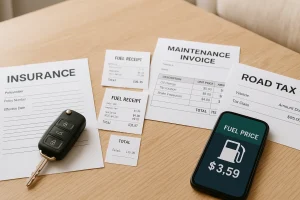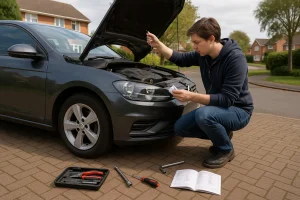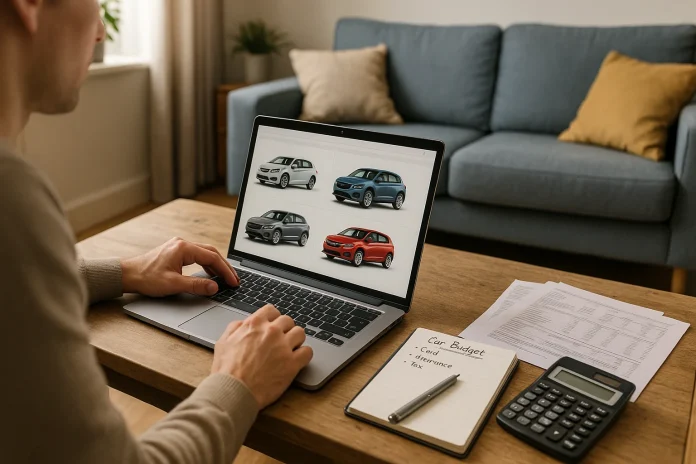Table of Contents
Choosing the right car for your budget starts with knowing what you can afford each month.
The price on the windscreen matters, but insurance, fuel, tax, maintenance and the finance plan shape your real costs.
If your credit file has issues, the way you finance the car becomes even more important.
Some drivers choose HP car finance bad credit because HP offers fixed monthly payments and ownership at the end without a balloon sum.
This helps you stay in control of your budget as long as the payment fits comfortably alongside running costs.
This guide gives you a simple roadmap. You will see how to set a realistic budget, compare new and used options, understand finance choices and avoid hidden expenses.
The aim is to help you pick a car that suits both your lifestyle and your long-term finances.
How to Find the Best Car for Your Budget?
Start with Your Budget

Your budget sets the limits before you look at any car. The goal is simple: choose a number you can afford every month without pressure. Most buyers fixate on the purchase price, but the real cost shows up in your monthly outgoings.
Start with your net monthly income. Then subtract essentials like rent, food, bills and savings goals. What remains is your maximum car allowance.
A common rule of thumb is to keep total car costs under 10–15% of your take-home pay, but your situation may require more caution if you have other commitments.
Break the cost into clear parts:
- Finance or loan payments
- Insurance (often higher for new drivers and certain models)
- Fuel or charging
- Maintenance, servicing and MOT
- Road tax
A car that fits the budget on paper can still stretch you once these costs stack up. That is why a simple calculation helps.
For example, if someone earns £2,200 a month after tax and keeps car costs at 12%, the safe allowance is about £260. This must cover the payment plus insurance and fuel, not just the finance amount.
Match the Car to Your Use Case
Once you know your budget, focus on how you actually drive. The right car for your budget is not the cheapest one you find. It is the one that fits your daily life without inflating your running costs.
Start with your main driving pattern. If you spend most of your time in city traffic, a small hatchback makes more sense than a large SUV.
Smaller cars often cost less to insure, tax and fuel. If you cover long motorway miles, look for something stable, comfortable and efficient at higher speeds.
Families usually need extra boot space, ISOFIX points and enough room for passengers and luggage.
Think of this step as matching the tool to the job. A stylish car that does not suit your routine will drain your budget through higher insurance, low fuel efficiency or costly wear and tear.
A car that matches your lifestyle does the opposite: it keeps running costs predictable and helps you get the most value from your money.
New vs Used: Trade-Offs and Risks
| Factor | New Car | Used Car |
| Initial Price | Higher upfront cost | Lower upfront cost |
| Monthly Payments | Often higher due to price | Often lower, but varies by age/mileage |
| Depreciation | Fast in first 3 years | Slower; major drop already happened |
| Warranty | Full manufacturer warranty | May have limited or no warranty |
| Maintenance Costs | Predictable and usually lower at first | Can rise quickly with age/mileage |
| Risk Level | Low risk (no history issues) | Higher risk (wear, hidden faults) |
| Finance Availability | More lenders, better rates | Fewer lenders, higher rates on older cars |
| Choice of Specs | Choose exact colour, trim, options | Choice depends on what is available |
| Potential Repairs | Minimal in early years | Possible immediate repairs depending on condition |
| Long-Term Value | Loses value quickly | Better value retention after initial drop |
Your budget stretches very differently depending on whether you pick a new or used car. Both options work, but each carries a set of financial trade-offs you must understand before you decide.
A new car gives you a full warranty, predictable maintenance costs and no history to worry about.
The downside is depreciation. A new car can lose a large part of its value in the first three years.
That loss affects how much equity you build and what you can afford next time. Monthly payments on new cars also tend to be higher.
A used car often offers better value because someone else has already absorbed most of the depreciation.
You may afford a higher trim or larger model for the same budget. The risk comes from wear, condition and incomplete maintenance history.
Repairs can appear sooner, especially if the car mileage is high or has not been serviced properly.
Finance terms differ as well. Some lenders offer stronger rates on newer cars because the risk is lower.
Older cars may face limits on loan length or require higher interest. Always check how this affects your monthly cost and your total cost over time.
Treat this choice as a balance between peace of mind and long-term savings. If you go used, protect yourself with a full history check, a thorough inspection and a clear understanding of likely repair costs.
If you go new, understand the impact of depreciation and make sure the higher payment fits comfortably within your budget.
Running Costs That Bite – More Than Fuel

A car that fits your budget on day one can strain your finances later if you overlook the running costs. These costs vary widely between models, engines and even postcodes. They often determine whether the car stays affordable in real life.
- Start with insurance: Premiums depend on age, driving history, car type, engine size and where you live. A small, low-powered hatchback often costs far less to insure than a larger or sportier model. Many buyers underestimate this and discover the real cost only after they try to insure the car.
- Next, look at fuel or charging: Petrol and diesel cars cost more to run when fuel prices rise, especially if you drive long distances. Hybrid and electric cars can lower running costs, but they may have higher purchase or finance prices. The right choice depends on your mileage and driving pattern.
- Add maintenance, servicing and MOT: Older cars tend to need more attention, and some brands cost more to repair due to parts and labour rates. A car with poor reliability can wipe out your savings with unexpected repairs. Check service intervals and common fault patterns for the models you consider.
- Do not forget road tax: The annual tax varies by emissions and fuel type. Some models cost very little; others cost several hundred pounds each year.
These costs shape the real affordability of the car. A model that looks cheap to buy can become expensive once everything else is added. A model that costs more upfront may save you money every month if it uses less fuel, carries lower insurance or has a solid reliability record.
Finance Options and How They Affect Your Budget
The way you pay for the car has a major impact on what you can truly afford. Two cars with the same price can lead to very different monthly costs depending on the finance option you choose. This is why you must understand how each option works before you commit.
- Cash keeps things simple. You avoid interest, and you own the car outright from day one. The drawback is the hit to your savings. If a cash purchase leaves no buffer for emergencies or running costs, it becomes risky.
- A personal loan spreads the cost over a fixed term. You own the car immediately, but you pay interest on the full amount. Interest rates vary and depend on your credit profile.
- Hire Purchase (HP) divides the cost into monthly payments over a set period. Once you make all the payments, the car becomes yours. The payments are usually higher than PCP but more predictable because you repay the whole balance.
- Personal Contract Purchase (PCP) keeps monthly payments lower because you only cover part of the car’s value. At the end, you choose to return the car, pay a final balloon payment to own it, or start a new agreement. PCP works well if you prefer flexibility, but the balloon payment often comes as a shock to beginners.
Every option changes your monthly cost, total cost, and level of commitment. This is why affordability depends not only on the car you choose but also on the finance method behind it. A finance plan that looks affordable on paper can become stressful if you ignore interest rates, the agreement length or the final payment.
Ownership and Aftercare: What Happens After Purchase

Your real costs start after you buy the car. Good habits keep the car reliable and protect your budget. Poor habits lead to stress and unexpected bills.
Begin with routine servicing. Follow the service schedule, check fluids, tyres and brakes, and deal with small faults early. This prevents bigger problems and keeps the car safe.
Prepare for unexpected repairs. Even reliable cars face wear. A small monthly emergency fund reduces pressure when something breaks.
Look after the car’s condition and paperwork. Clean it, avoid unnecessary wear and keep every service receipt. A well-maintained car with a full history sells faster and for more money.
Finally, plan for when to upgrade. Rising repair costs or lifestyle changes may make a swap sensible. Good aftercare helps you keep more value when that time comes.


